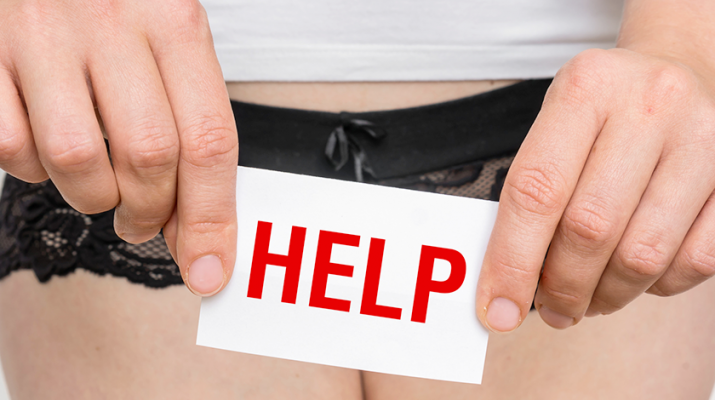Treating women’s incontinence
By Deborah Jeanne Sergeant
If you’re a woman experiencing urinary incontinence, you’re like many other American women. The National Institutes of Health estimates that about 20 to 30 percent of young adult women experience urinary incontinence; that rises to 30 to 40 percent of middle-aged women and then to 30 to 50 percent of elderly women.
Urinary incontinence involves urge incontinence — the feeling of needing to urinate — and stress incontinence, which occurs when the patient sneezes, coughs, laughs or otherwise moves in a way that causes urine to leak. The leaks are significant enough to cause health or social problems.
Several factors relate to why women experience urinary incontinence, including childbirth. During pregnancy, the body decreases support in the pelvic floor and produces hormones that relax the connective tissues to make birthing easier.
The growing baby places pressure on the bladder and can stretch tissues as well.
Maternal weight before and during pregnancy affects the chances of urinary incontinence after delivery, according to Francie Marzec, physical therapist and owner The Real You Physical Therapy in Clarence.
“Being overweight, even if you never had a child, or having a larger baby, can stretch those pelvic floor muscles,” Marzec said. “Women tend to hold stress there and tighten those muscles. Just because they’re tight doesn’t mean they’re strong nor that you have control.”
Advanced maternal age also increases the risk, as women in their mid-30s have experienced more wear and tear on their pelvic floor. That’s also the age at which people begin losing muscle tissue.
Genetics may also play a role.
The more children a woman bears, the greater risk she has of urinary incontinence, but the risk doesn’t increase much more after the third or fourth pregnancy. This applies to both vaginal and C-section births. Despite the difference in delivery method, both experience the months of hormonal changes that result in lax connective tissues and the pressure of carrying a baby.
Most women recover from childbirth-related urinary incontinence within three months of delivery. Especially for those who don’t, physical therapy can help.
Marzec helps women learn movements that strengthen the core muscles, such as proper breathing. She said that deep, abdominal breathing can improve the core strength, which includes the pelvic floor.
“Many of us are poor breathers,” she said. “We tend to breathe up top with the chest, which leaves out all the areas in the abdominal area. With many of my patients, I start with breathing to get some movement in the pelvic floor area.”
She said that once they gain movement in the pelvic floor through deep breathing, they begin to experience better urinary control.
Marzec added than some people don’t present with urinary incontinence right away, but pelvic floor weakness manifests with back or hip pain.
“If we address pelvic weakness early enough, we can prevent urinary incontinence and other issues later,” Marzek said. “It’s very overlooked. Most doctors don’t have the resources available. It’s not something most women go to their doctor to say, ‘I’m leaking’. And most doctors wouldn’t know what to do about it. Most people feel it’s part of aging but it definitely doesn’t have to be. It’s preventable and, in a lot of women, reversible.”
For some women, performing Kegel exercises, which tighten and relax the pelvic floor muscles, makes a difference. To find the right muscles, try to stop a flow of urine while on the toilet and then engage those muscles elsewhere throughout the day, increasing the time holding the muscles for each repetition.
Physician Leila Kirdani is board-certified in both metabolic medicine and family practice. She operates Quality of Life Medicine in Rochester. She recommends Kegels.
“Do them throughout the day until you work up 50 or 100 a day,” Kirdani said.
Of course, women need to wait until they’re cleared for exercise and have healed from delivery.
Older women may benefit from balancing their hormones. Kirdani said that low estrogen can affect urinary control but topical, over-the-counter estriol cream can help.

